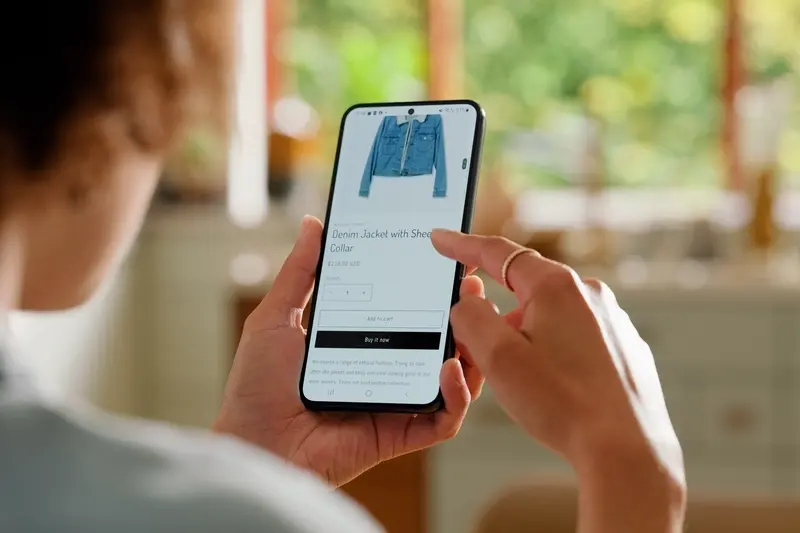What Makes Some Mobile Games Addictive And Others Boring?
Every day, millions of people pick up their phones and lose hours to mobile games they swore they'd only play for five minutes. Candy Crush Saga alone has generated over £5 billion in revenue, whilst countless other games disappear into obscurity within weeks of launch. The difference between a mobile game that hooks players and one that gets deleted after a single session isn't luck—it's deliberate design choices that tap into fundamental human psychology.
After building dozens of mobile apps and games over the years, I've seen firsthand how tiny tweaks to user engagement mechanics can transform a boring game into something people genuinely can't put down. The most successful mobile games aren't necessarily the most innovative or visually stunning; they're the ones that understand what makes our brains tick and how to create genuine addiction mechanics without crossing ethical lines.
The best mobile games don't just entertain—they create habits that feel rewarding rather than manipulative
This guide will break down the specific techniques that separate addictive mobile games from forgettable ones. We'll explore the psychology behind player retention, examine how reward systems actually work, and look at why some games keep you coming back whilst others feel like a chore. Whether you're developing your first mobile game or trying to understand why you can't stop playing that puzzle game, you'll discover the science behind what makes mobile gaming so compelling.
The Psychology Behind Mobile Game Design
The human brain is wired to seek patterns, rewards, and social connection—mobile game designers have been exploiting these tendencies for years. When you tap that screen and see a bright flash of colour paired with a satisfying sound, your brain releases a small hit of dopamine. That's the same chemical that makes you feel good when you eat chocolate or get a text from a friend.
Game designers understand this perfectly. They know that uncertainty makes rewards more powerful than predictability. If you knew exactly when you'd find a rare item, the excitement would disappear quickly. But when it happens randomly? Your brain stays engaged, always hoping the next tap might be the lucky one.
The Three Pillars of Player Psychology
There are three main psychological triggers that successful mobile games use:
- Achievement - players need to feel they're getting better or progressing
- Autonomy - giving players choices makes them feel in control
- Social connection - humans naturally want to compete and collaborate
The best games don't rely on just one of these triggers—they weave all three together. A puzzle game might let you choose your own path (autonomy), track your improving scores (achievement), and compare results with friends (social connection). This combination creates a psychological pull that keeps players returning day after day.
How Reward Systems Keep Players Coming Back
I've watched countless mobile games rise and fall over the years, and there's one thing that separates the hits from the misses—how well they handle rewards. When done right, reward systems create that "just one more level" feeling that keeps players glued to their screens. When done wrong? Well, your user engagement drops faster than a stone.
The secret isn't just giving out rewards randomly. Players need to feel like they've earned something meaningful. That's where the magic happens—when someone completes a challenging level and gets rewarded with new powers, coins, or unlocked content, their brain releases dopamine. This chemical reaction makes them want to experience that feeling again.
Types of Rewards That Work
Different types of rewards trigger different responses in players:
- Daily login bonuses that increase over consecutive days
- Achievement badges for completing specific challenges
- Currency rewards (coins, gems, stars) for progression
- Cosmetic upgrades that personalise the experience
- Surprise rewards that appear unexpectedly
The timing of these rewards matters just as much as what you're giving out. Too frequent and they lose their value; too rare and players get frustrated and abandon your mobile game entirely.
Mix predictable rewards (daily bonuses) with surprise rewards (random power-ups) to keep players engaged without making your game feel mechanical or boring.
Smart developers understand that addiction mechanics work best when players don't notice them. The most successful games make their reward systems feel natural and fun, not like obvious manipulation.
The Power of Social Features in Gaming
I've worked on dozens of mobile games over the years, and there's one pattern I see repeatedly—games with strong social features keep players engaged far longer than those without. It's not just about having a chat function or leaderboards (though those help). The real magic happens when players feel connected to other real people.
Think about it: when you're playing alone, there's only so much motivation to keep going. But when your friends are watching your progress, competing with you, or working alongside you? That changes everything. Social features tap into our basic human need for connection and recognition.
Social Features That Actually Work
Not all social features are created equal. Some feel forced or gimmicky, whilst others naturally fit into the gameplay experience. Here are the ones that consistently perform well:
- Friend challenges and competitions
- Team-based objectives and guilds
- Sharing achievements and progress
- Collaborative gameplay elements
- Real-time multiplayer modes
The best social features don't feel like an afterthought—they're woven into the core gameplay. When done right, they create a sense of community that keeps players coming back long after the novelty of the game mechanics has worn off.
Why Progression Matters More Than You Think
I've worked on countless mobile game projects over the years, and there's one thing that separates the hits from the flops—progression systems that actually make sense. Players need to feel like they're getting somewhere, even when they're just tapping coloured blocks or matching three gems in a row.
Think about it this way: nobody wants to play the same level forever. That would be boring! But here's where many developers get it wrong—they think progression just means adding more levels or making things harder. It's not that simple.
The Sweet Spot of Achievement
Good progression in mobile games works like climbing a ladder; each step up feels achievable but still requires effort. Players want to unlock new characters, reach higher scores, or discover new areas. These small wins keep them engaged because their brain releases a tiny burst of satisfaction each time they progress.
The best mobile games make you feel like you're constantly improving, even when you're actually just getting better at the same basic mechanics
What makes progression truly addictive is when players can see their next goal clearly. They know exactly what they need to do to unlock that new weapon or reach the next area. This creates a powerful loop where completing one goal immediately presents another, keeping user engagement high and players coming back for more.
Creating Habits Through Smart Game Mechanics
Building habits in mobile games isn't about tricking players—it's about creating natural patterns that feel rewarding. The best games understand that habits form when actions become automatic, and they design their mechanics around this simple truth.
The Daily Check-In Loop
Daily bonuses work because they create a routine. Players open the game, collect their reward, and often end up playing for longer than planned. The key is making this first action quick and satisfying—no complicated menus or lengthy loading screens.
Smart developers tie these daily moments to meaningful progress. Instead of just giving random coins, they might unlock a new character or provide materials for an upgrade the player actually wants. This connection between daily actions and long-term goals is what transforms casual checking into genuine engagement.
Building Momentum Through Small Wins
Habit formation thrives on momentum. Games that understand this start each session with easy victories—clearing a simple level, completing a quick task, or collecting resources. These small wins create positive feelings that encourage players to continue.
The most effective approach combines these micro-successes with gentle nudges towards bigger challenges. Players feel capable and motivated, not overwhelmed. When someone opens your game and immediately feels successful, they're much more likely to return tomorrow and repeat the cycle.
When Games Become Too Easy or Too Hard
Picture this: you're playing a mobile game and suddenly you're stuck on level 47 for three weeks straight. Frustrating, right? Or maybe you breeze through 200 levels in a day and feel completely bored. Both scenarios kill user engagement faster than you can say "uninstall".
Getting difficulty balance right is one of the trickiest parts of mobile game development. Too easy and players get bored—there's no challenge, no sense of achievement when they win. Too hard and they quit out of frustration. The sweet spot lies somewhere in between, where players feel challenged but not overwhelmed.
The Goldilocks Zone of Gaming
Smart game designers use what's called dynamic difficulty adjustment. This means the game watches how you play and subtly changes the challenge level. If you're struggling, it might make enemies slightly weaker or give you better power-ups. If you're sailing through, it ramps things up a bit.
The addiction mechanics here are clever. When difficulty is just right, players enter what psychologists call a "flow state"—they're completely absorbed and losing track of time. That's exactly what keeps people coming back for more.
Test your game with different skill levels of players. What feels easy to your development team might be impossible for casual players.
Common Difficulty Mistakes
Here are the biggest errors I see in mobile game design:
- Sudden difficulty spikes that feel unfair
- No clear progression indicators
- Punishing players too harshly for mistakes
- Not giving players enough tools to overcome challenges
- Making early levels too challenging for new players
The best mobile games feel like they're reading your mind—always serving up the right level of challenge at the right moment. Get this balance right, and you'll have players hooked for months.
Conclusion
After working with game developers for years, I've seen how the smallest changes can turn a failing game into something people can't put down. The difference between addictive and boring mobile games isn't magic—it's understanding how our brains work and what keeps us coming back for more.
The most successful games combine psychology with smart design. They use reward systems that make our brains release dopamine at just the right moments; they create social connections that make us feel part of something bigger; they build progression systems that always give us something to work towards. But here's the thing—they don't rely on just one of these elements. They weave them together carefully.
What really matters is balance. Games that are too easy become boring quickly, whilst games that are too hard make people give up entirely. The sweet spot is somewhere in the middle, where players feel challenged but not frustrated. This is where habit-forming mechanics come into play—those daily rewards, streak counters, and perfectly timed notifications that bring players back day after day.
Building an addictive game isn't about tricking people or manipulating them unfairly. It's about creating experiences that genuinely entertain and engage. When done right, these games become a positive part of people's daily routines rather than something they feel guilty about.
Share this
Subscribe To Our Learning Centre
You May Also Like
These Related Guides

What Psychological Triggers Make Users Return To Apps?

What Psychological Triggers Work In Mobile Commerce?



